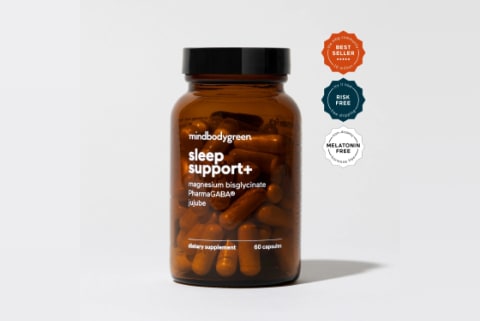Get Ready To Brag About Your HRV Score After Trying These Underrated Tips
It's pretty simple.


Assistant Beauty & Health Editor
Assistant Beauty & Health Editor
Hannah Frye is the Assistant Beauty Editor at mindbodygreen. She has a B.S. in journalism and a minor in women’s, gender, and queer studies from California Polytechnic State University, San Luis Obispo. Hannah has written across lifestyle sections including health, wellness, sustainability, personal development, and more.

Image by PeopleImages / iStock
November 7, 2023
We carefully vet all products and services featured on mindbodygreen using our
Our selections are never influenced by the commissions earned from our links.
With the uptick in wearable devices hitting the market, heart rate variability (HRV) is becoming quite a hot topic. As WHOOP founder and CEO Will Ahmed shared on a recent mindbodygreen podcast episode, this powerful metric can help you understand your body's current state at any given moment. In general, the higher or more stable your HRV score, the better. But how do you elevate your own levels?
To come, three underrated ways to raise your HRV, plus a quick refresher on why it matters.
What is HRV again?
At a glance, HRV is a measurement of how much variation between the timing of your heartbeats. Having a higher HRV is a sign you are fit, well-rested, and recovering well. Having a lower HRV means that you could be stressed, burnt out, or sick.
HRV is starkly different from resting heart rate, as the former doesn’t have one ideal range to shoot for. Instead, improvement is all about increasing your personal HRV, measuring success against your former HRV rather than comparing your levels to others.
You can see this notion of individualized ideals from a 2020 study on Fitbit data from 8 million users' smartwatch data—factors like sex, genetics, and even hormonal shifts during menstruation and menopause can significantly alter your HRV.
We've covered HRV in-depth before, so check out this article for more information on what your ideal HRV looks like and extra tips to reach your goal.
3 underrated ways to boost it
HRV is an interesting metric to work on, because you’ll want to address both your physical and mental health to truly optimize this number. Here, find Ahmed's underrated tips:
“People who tend to be meditators or have some kind of mindfulness practice often have higher heart rate variabilities,” Ahmed says. (And research backs him up!)
There are plenty of mindfulness habits to choose from, including but not limited to meditation, breathwork, yoga, or simply engaging your mindfulness muscles during a daily stroll.
Whatever practice you choose, keep it on-hand for stressful times, and utilize mindfulness as a way to calm down quickly, benefiting both your mental health and your HRV.
3.
Don’t underestimate the impact of sleep
When you’re sleeping, your body kicks into recovery mode—so it’s not surprising that clocking a full night of high-quality sleep can support a healthy HRV.
This doesn’t just mean getting into bed earlier (though that’s a worthy first goal), but focusing on how much reparative sleep you get—this includes REM sleep and slow-wave sleep, Ahmed explains.
The takeaway
Having a high HRV indicates that you are well-rested, fit, and recovering well—but everyone's ideal range looks different. To improve your own HRV, go back to the basics: Drink enough water, have a mindfulness practice on-hand, and never underestimate the power of sleep. For more on health metrics and HRV, tune into the episode below:

 UsenB
UsenB 

































